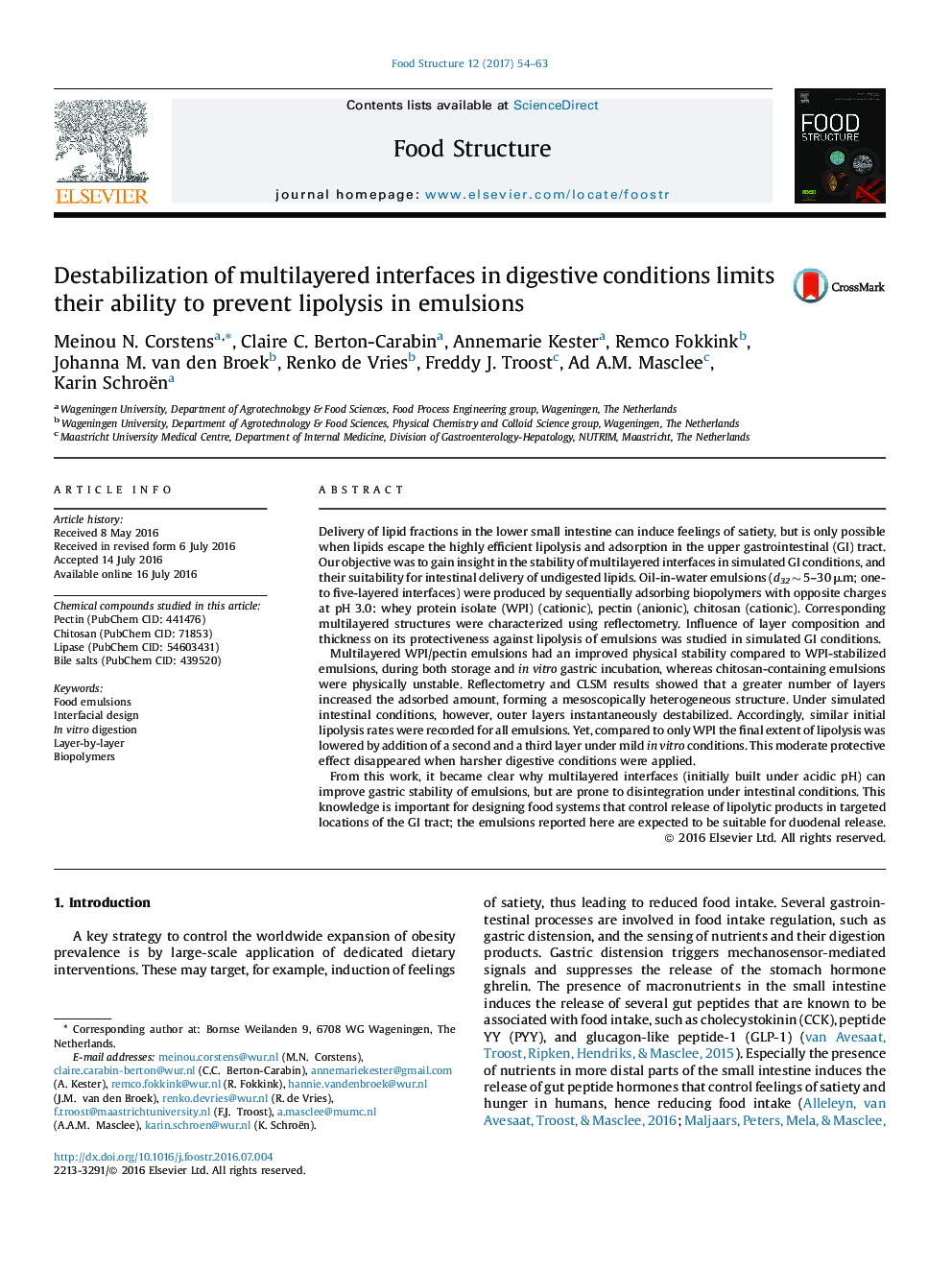| کد مقاله | کد نشریه | سال انتشار | مقاله انگلیسی | نسخه تمام متن |
|---|---|---|---|---|
| 6451800 | 1416527 | 2017 | 10 صفحه PDF | دانلود رایگان |
- We prepared multilayered emulsions (up to 5 layers) and parallel model surfaces.
- Adsorbing more than one interfacial layer improved gastric stability of emulsions.
- At intestinal pH, the outer layers destabilized instantaneously.
- Because of this destabilization, all emulsions had a similar lipolysis rate.
- Gastric-resistant emulsions could be used for targeted duodenal release.
Delivery of lipid fractions in the lower small intestine can induce feelings of satiety, but is only possible when lipids escape the highly efficient lipolysis and adsorption in the upper gastrointestinal (GI) tract. Our objective was to gain insight in the stability of multilayered interfaces in simulated GI conditions, and their suitability for intestinal delivery of undigested lipids. Oil-in-water emulsions (d32 â¼Â 5-30 μm; one- to five-layered interfaces) were produced by sequentially adsorbing biopolymers with opposite charges at pH 3.0: whey protein isolate (WPI) (cationic), pectin (anionic), chitosan (cationic). Corresponding multilayered structures were characterized using reflectometry. Influence of layer composition and thickness on its protectiveness against lipolysis of emulsions was studied in simulated GI conditions.Multilayered WPI/pectin emulsions had an improved physical stability compared to WPI-stabilized emulsions, during both storage and in vitro gastric incubation, whereas chitosan-containing emulsions were physically unstable. Reflectometry and CLSM results showed that a greater number of layers increased the adsorbed amount, forming a mesoscopically heterogeneous structure. Under simulated intestinal conditions, however, outer layers instantaneously destabilized. Accordingly, similar initial lipolysis rates were recorded for all emulsions. Yet, compared to only WPI the final extent of lipolysis was lowered by addition of a second and a third layer under mild in vitro conditions. This moderate protective effect disappeared when harsher digestive conditions were applied.From this work, it became clear why multilayered interfaces (initially built under acidic pH) can improve gastric stability of emulsions, but are prone to disintegration under intestinal conditions. This knowledge is important for designing food systems that control release of lipolytic products in targeted locations of the GI tract; the emulsions reported here are expected to be suitable for duodenal release.
193
Journal: Food Structure - Volume 12, April 2017, Pages 54-63
